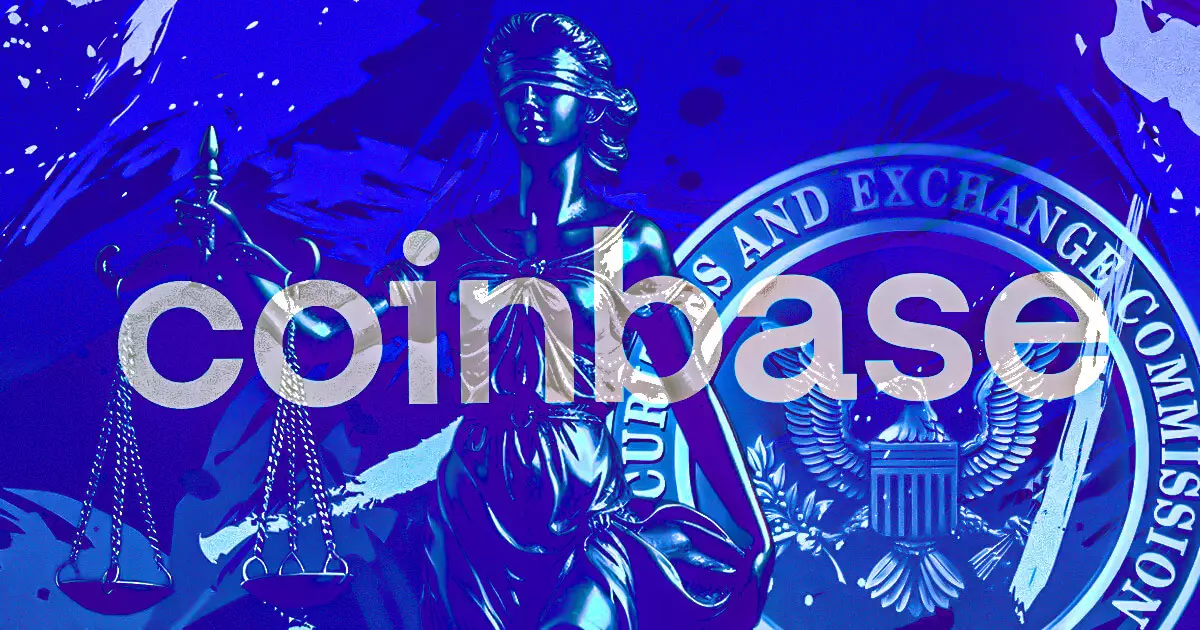In a pivotal development for the cryptocurrency space, Coinbase has successfully negotiated an agreement with the Securities and Exchange Commission (SEC) staff to dismiss an ongoing enforcement case. This decision, pending final approval from the SEC, has spurred Bitcoin’s value, pushing it back above the crucial $99,000 mark. The legal battle that preceded this agreement raised significant questions about the SEC’s regulatory authority and how digital assets are classified in the financial landscape.
Understanding the Legal Dispute
The conflict began when the SEC challenged Coinbase’s classification of certain assets, labeling them as securities. Coinbase’s CEO, Brian Armstrong, argued that this classification exceeded the SEC’s statutory powers. In public statements, Armstrong expressed optimism that the case would be officially dismissed soon, claiming the settlement agreement would result in “an absolute dismissal, with no fines and no changes to our operations.” This assertion underscores the relief among Coinbase’s leadership, as such regulatory challenges can significantly drain resources and create uncertainty within the industry.
From a broader perspective, this resolution offers more than just immediate relief for Coinbase. It raises vital issues surrounding regulatory oversight in the cryptocurrency market, especially regarding consumer protection and market innovation. Armstrong elaborated that the dispute was not merely about defending Coinbase’s business model; it was about establishing a legal framework that dictates industry operations rather than one shaped solely by regulatory whims. This mention of a ‘legal versus regulatory interpretation’ framework is crucial, as it highlights the ongoing struggle within the digital asset space for consistency in regulation.
The agreement may serve as a benchmark for other firms engaged in similar battles with regulators, as it suggests that adherence to legal standards provides a legitimate ground for contesting potentially overreaching regulatory actions. Coinbase’s successful negotiation reinforces a narrative of resilience among cryptocurrency firms facing scrutiny and illustrates that strategic legal positions can yield favorable outcomes.
The resolution of Coinbase’s legal ordeal coincides with a broader rise in discussions about regulatory clarity in the cryptocurrency sector. Many in the industry argue that ambiguous regulations stifle innovation and market growth. Armstrong’s commentary, particularly his acknowledgment of past political influences on the SEC’s actions, reflects a sentiment within the crypto community that the regulatory landscape is undergoing intense scrutiny and potential reshaping.
Moreover, Armstrong attributed part of this victory to changes in the political landscape, particularly during the Trump administration, which he believes played a role in prompting shifts in cryptocurrency regulations. This political acknowledgment is significant; it indicates the interconnectedness of regulation, politics, and market dynamics.
While this settlement marks a victory for Coinbase, it is crucial to recognize that complexities in cryptocurrency regulation are far from resolved. The case serves as an essential reminder of the continuing dialogue between regulators and crypto companies. As digital assets increasingly integrate with traditional finance, stakeholders from all sectors will need to engage in discussions to establish clearer regulatory frameworks that foster innovation while ensuring investor protections are adequately addressed.
The potential for further legislative efforts stemming from this resolution is notable, as industry advocates call for more comprehensive guidelines. Such regulations will be key in defining how digital asset markets operate in the future. As policymakers reflect on this case, they have an opportunity to craft laws that balance the innovation potential of cryptocurrency with the necessary vigilance to protect consumers.
While Coinbase’s agreement with the SEC has ignited optimism within the cryptocurrency space, it is essential to remember that the road to comprehensive regulatory clarity remains long and winding. This agreement could catalyze needed discussions, serving as a foundation for further refinement in crypto regulations. Ultimately, the resolution should motivate both regulators and market participants to pursue a balanced approach that can drive innovation forward while safeguarding the interests of investors.


Leave a Reply